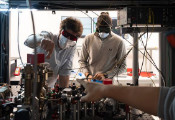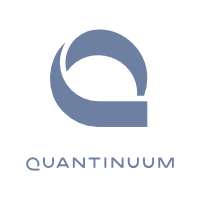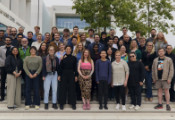SandboxAQ Publishes Scientific and Technical Milestones for Cybersecurity
Palo Alto, CA, December 17, 2024 -- SandboxAQ today announced a series of scientific and technical milestones on Cybersecurity, collectively marking a set of significant advances in the company’s core research and product development activities.
This has been a great year for Cybersecurity at SandboxAQ with 18 publications, raising to 45 the total number of cybersecurity peer-reviewed publications since SandboxAQ spun out of Alphabet in 2022. Sixteen of these papers are in flagship conferences. But they had three other great successes. First, this summer NIST published FIPS 205 together with FIPS 203 and 204. The consortium behind this standard, SPHINCS+, was led by their own Andreas Hülsing, from the PQC team in R&D. Second, SDitH was accepted by NIST into the second round of the NIST PQC Standardization for Additional Signature Algorithms. And third, one of their papers obtained the best paper award in Asiacrypt, one of the three major conferences in cryptography!
“SandboxAQ's work in advancing the scientific literature around Post Quantum Cryptography, combined with their global efforts in the related standards, are essential in helping the community prepare for the quantum threat.” Mike Brown, CEO, Polar Analysis.
But let’s dive into this year’s flagship publications. There are three flagship conferences on cryptography in the world every year (Eurocrypt, Crypto and Asiacrypt), in which the best private and public sector actors in the world scarcely publish more than one or two papers every year. 2024 started extremely well for SandboxAQ with 3 papers accepted at Eurocrypt: one showing significant attacks on one of the candidates for the current NIST Standardization on Additional Post-Quantum Signatures, a second describing the first practically feasible Oblivious Pseudo Random Functions (which are essential for advanced cryptography, e.g. anonymous credentials), and a third on polynomial commitments, an essential ingredient for Zero Knowledge Proofs.
“SandboxAQ has gathered an impressive team of cryptography researchers and engineers that has led to significant success. Beyond building an exciting cryptography discovery tool, in a short time they have made major contributions to the design and standardization of new cryptographic algorithms and protocols, with many excellent papers on advanced cryptography and digital signatures in top-tier academic publications.” Douglas Stebila, Associate Professor of cryptography, University of Waterloo, Canada.
Mid-year they learnt that once again they had made it, they had three papers at Crypto: one on a formally-verified implementation of FIPS 203 which gives very strong guarantees on the correct implementation of this essential standard for PQC, a second on the evaluation of quantum attacks against lattices, one of the main domains PQC relies on, and a third on the security of SDitH, their NIST candidate discussed above.
“We are extremely glad our candidate made it to the second round of the NIST Standardisation for Additional PQC Signatures, especially as this comes on top of the publication of FIPS 205 and of many scientific results this year. We do hope our algorithms will help companies and governments across the world on the PQC transition.”, Carlos Aguilar Melchor, Chief Scientist, Cybersecurity, SandboxAQ.
This autumn, once again they received great news with three extra papers accepted at the last flagship conference of the year, Asiacrypt: one (best paper award) on making Fully Homomorphic Encryption, a fundamental tool for privacy, faster, a second on Oblivious Pseudo Random Functions for Threshold Cryptography (e.g. as used in crypto-currency wallets), and a third on the formal verification of the proof of FIPS 205.




































